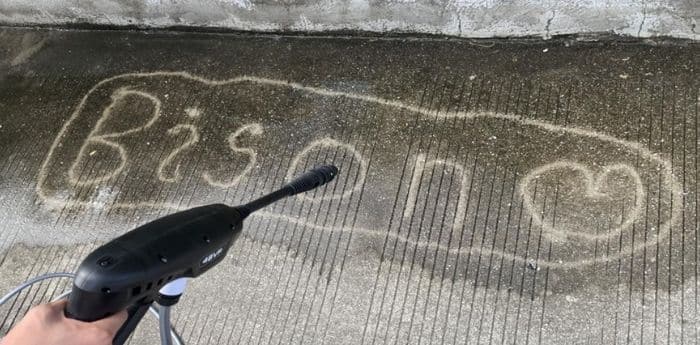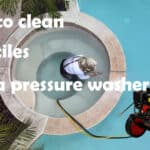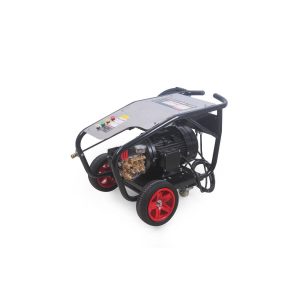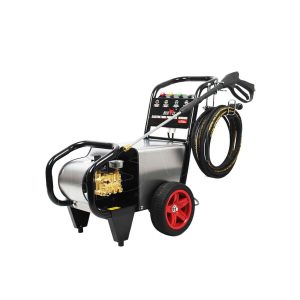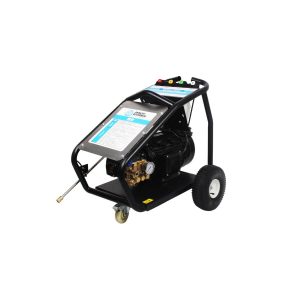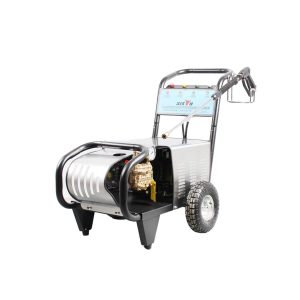
BISON Santy
Hello, I am Santy, the funder of bisonclean.com. I have been in cleaning machinery field for more than 5 years now, and the purpose of this article is to share with you the knowledge related to pressure washer from a Chinese supplier's perspective.
Table of Contents
Over time, however, patios can accumulate dirt, grime, moss, and stains from the elements and everyday use. One of the most effective methods to restore the pristine look of a patio is through high-pressure water washing, commonly known as pressure washing. This technique uses a high-pressure water spray to dislodge and remove built-up debris, providing a deep clean that traditional methods like scrubbing or hosing off simply can’t achieve.
Here is BISON’s complete guide on how to pressure wash a patio. By following this guide, you will learn how to execute and complete the pressure washing process efficiently and safely, ensuring that your patio looks its best.
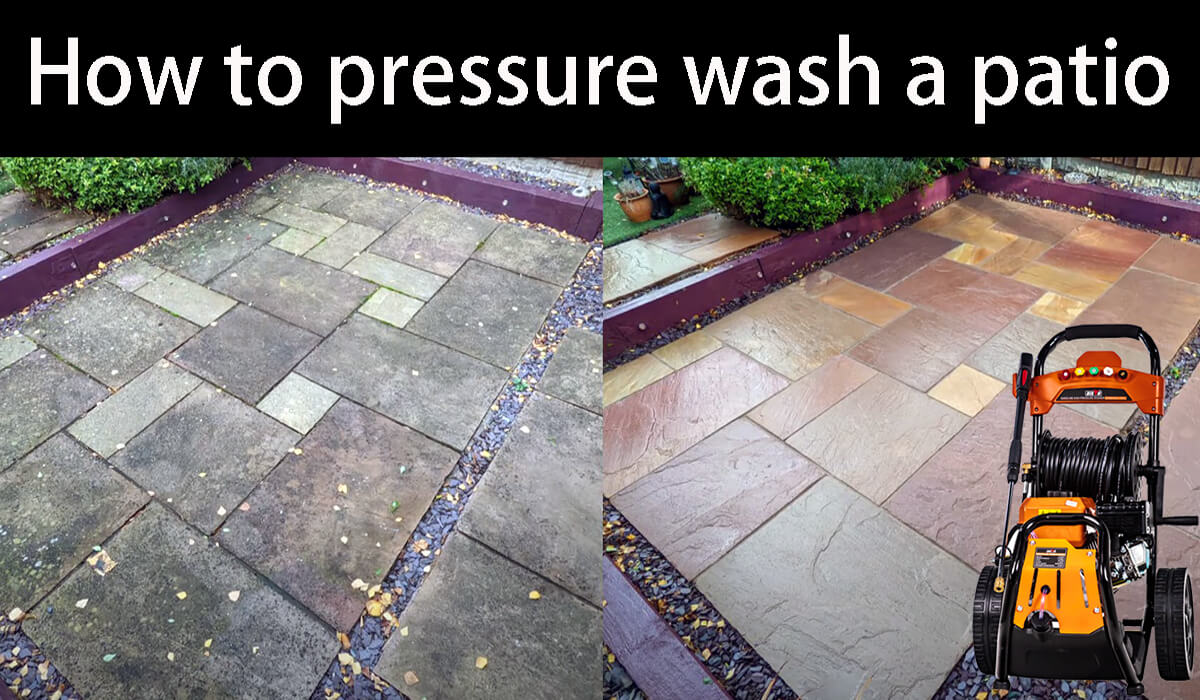
Preparation for pressure wash a patio
BISON believes that proper preparation before beginning the actual pressure washing process is key to ensuring effectiveness and safety.
Gather necessary equipment
- Suitable pressure washers: Electric pressure washer are generally adequate for home use, while gasoline pressure washer versions offer higher power for tougher jobs.
- Suitable nozzle: The 25-degree nozzle is often used for patio cleaning as it provides a good balance between power and coverage. The 15-degree nozzle has a more concentrated spray for tough stains. There is also a 40-degree nozzle, which is good for quick rinsing and covering larger areas with less pressure.
- Detergent: Choose a pressure washer detergent that is safe for your patio material (concrete, stone, wood, etc.).
- Broom or leaf blower: A broom or leaf blower will help you clear loose debris from the patio surface before pressure washing.
- Safety gear: Equip yourself with goggles, closed-toe shoes, gloves, and possibly ear protection, especially if you’re using a gasoline pressure washer. Flying debris can cut injure you.
Pre-cleaning steps
- Sweep the patio: Start by thoroughly sweeping the patio with a broom or use a leaf blower to remove loose dirt, and leaves, and move or cover other fragile furniture with plastic sheets. – not everyone does. Still, if you start blasting the pressure washer on a dirty patio, you risk debris and stone chips flying everywhere. This will damage your washer, your windows, and more.
- Check for cracks or damage: Inspect the patio surface for cracks, loose tiles, or damaged areas. Avoid pressure washing over them or make any necessary repairs first. Pressure washing can aggravate existing damage if not repaired.
- Start the pressure washer: Attach one end of the pressure washer hose to your water source (outdoor faucet) and the other end to the pressure washer’s water inlet. Carefully check that all connections are tight and leak-free before starting the pressure washer.
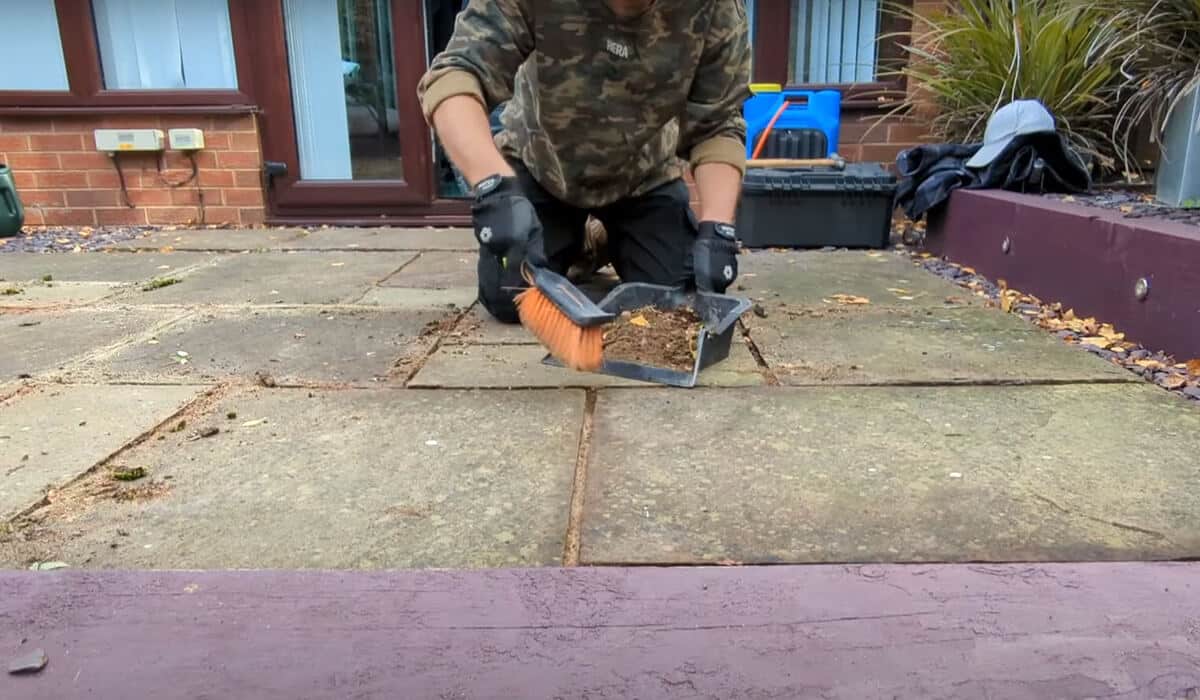
How to pressure wash a patio
#Step 1: Test area to perform power/bar tests
If you have a large patio, test your washer pressure in a corner location. A pressure between 1,200 and 2,300 PSI will give you enough power without any hassles. If the pressure is too high, the water stream will damage your flagstone, not just the moss and surface dirt.
#Step 2: Start patio washing
If you use pressure washer detergent, now is the time to wet your patio and apply. Follow the manufacturer’s instructions for dilution and application. Use a garden hose or low-pressure nozzle to spray the cleaner and allow it to sit on the surface for 5 – 10 minutes.
#step 3: Clean the patio
First, hold the pressure washer nozzle at a safe distance from the patio surface, usually about 12-18 inches. If you are too close, you may damage the surface; if you go too far, the cleaning effect will be reduced. Then tilt the nozzle about 45 degrees, this angle helps to remove dirt without pushing it deep into the surface.
When sweeping, start at one end of the patio and move to the other end. Move the nozzle in a consistent sweeping motion, slightly overlapping each sweep to avoid leaving streaks. If the patio is sloped, start at the higher end and move downward to direct debris and water off the surface. Go easy on joints and lines when sweeping. If you use less pressure or the wrong technique, you avoid sanding out, which can cause stability problems later.
#step 4: Rinse the patio
After cleaning, switch to a 40-degree nozzle or lower pressure setting to rinse off any residual detergent and loose dirt. Check the entire patio for any areas that may have been missed or need additional cleaning. Re-clean these spots as needed.
#step 5: Finish up
When you have finished cleaning with the pressure washer, always switch off the machine and disconnect it from the water supply. Then turn it back on and pump the trigger to drain the hot water from the engine. Wait for your patio to dry – job done!
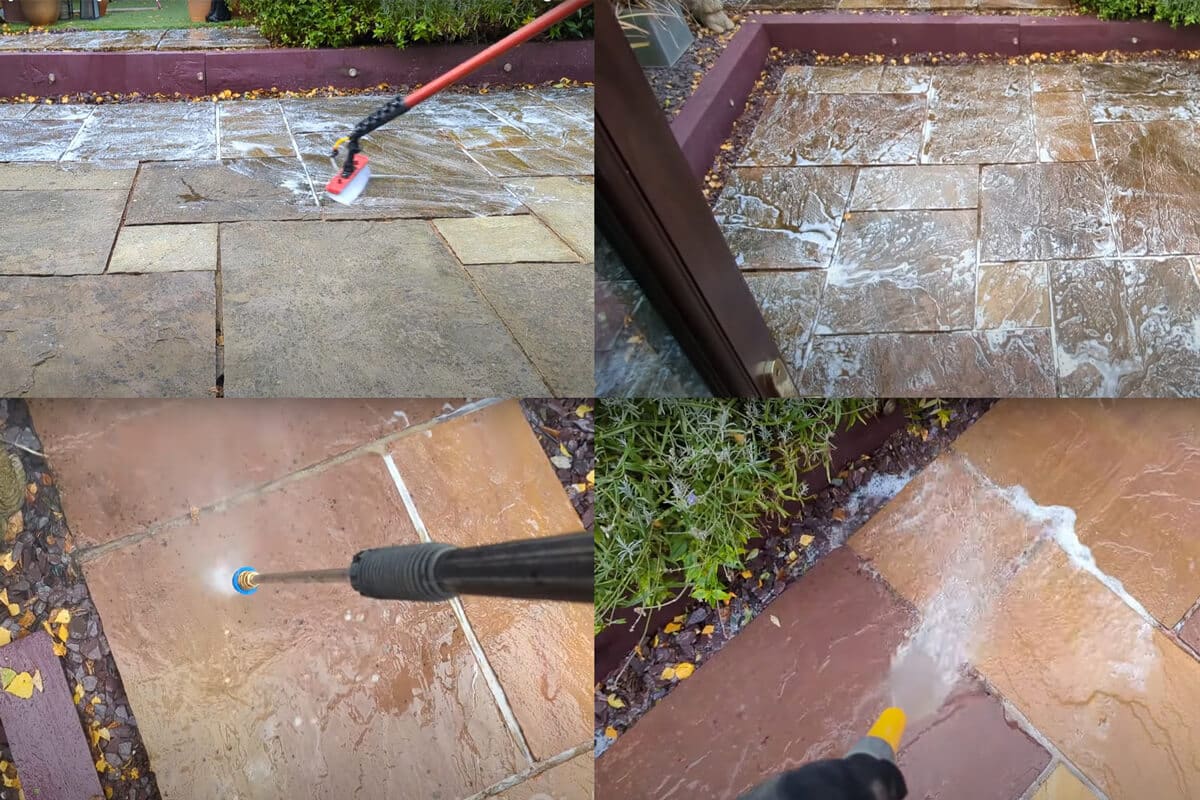
Post-cleaning care for a patio
1.Let the patio dry completely
Make sure there is no water accumulation on the patio. Let the patio air dry naturally in the sun. Depending on the weather conditions, concrete and stone patios typically take a few hours to a full day to dry. During this time, no furniture should be placed or people should walk on the patio to avoid dirt accumulation.
2.Patio evaluation and repair
Once the patio is dry, conduct a thorough inspection to ensure that no spots have been missed. Assess any potential damage, repairing any cracks or damage.
3.Store the pressure washer and cleaning equipment properly
Before storing, run clean water through the pressure washer to remove any detergent residue. Make sure all parts are free from debris. And wipe down the pressure washer and accessories to prevent rust and other damage.
Then drain all water from the pressure washer hose and unit, disconnect all hoses, nozzles, and accessories, and store them separately to reduce wear. Finally, store the pressure washer in a dry and ventilated place.
Conclusion
Pressure washer a patio is a transformative and straightforward process when approached with care and attention to detail. By following the outlined steps — preparing the area, applying detergent, pressure washing, rinsing, and performing post-cleaning care — you can achieve a thorough and lasting clean.
BISON encourages you to follow these steps for the best results and to maintain your patio in pristine condition. As you embark on this cleaning journey, remember that BISON, a well-known supplier in the pressure washer industry, is ready to support you. We offer high-quality pressure washers and related accessories suitable for high-pressure cleaning tasks. In addition to first-class products, BISON also provides dealers with a comprehensive service guarantee, making us a reliable partner for all your high-pressure cleaning needs. Take your cleaning business to the next level by investing in a BISON pressure washer.
FAQs About how to pressure wash a patio
- Effective dirt and grime removal
- Prevents mold and mildew growth
- Improves appearance
- Increases longevity
- Eco-friendly cleaning
- Versatile application
yes, Small debris fragments like pebbles and sticks can fly into the air during a pressure wash and land in delicate areas like your eyes. For safety reasons, please take protective measures, both for your body and the objects around you.
No, a pressure washer is a great way to keep your patio stones clear of algae and moss. instead, you must learn how to wash patio stones gently and carefully. pressure washers can damage plain flagstones and natural stone, pulling sand out of joints. Stick with the default nozzle and keep the pressure low.
You might also enjoy
Questions?
Contact Us Today.
Related Products
Find more?
Related Posts
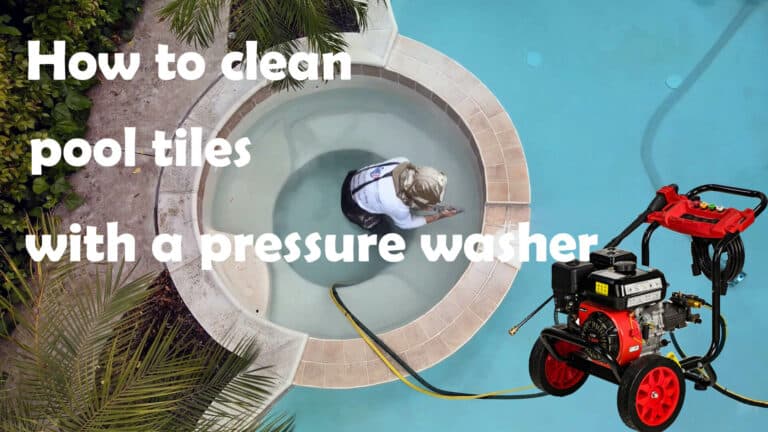
How to clean pool tiles with a pressure washer
This comprehensive guide will walk you through the steps to restore your pool tile to its original glory using a pressure washer.

How pressure washing can help with oil field cleaning
This article will show how pressure washing can provide a cleaning solution for the oilfield industry and explore its benefits and applications.
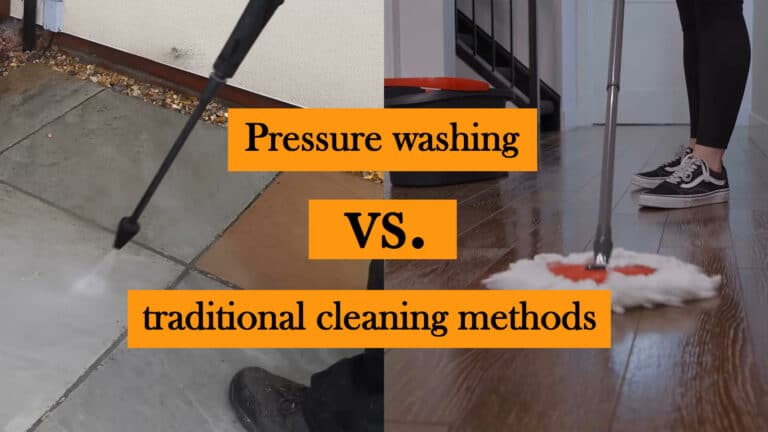
Pressure washing vs. traditional cleaning methods
In this article, BISON will take an in-depth comparison of pressure washing vs. traditional cleaning methods to highlight their pros and cons.
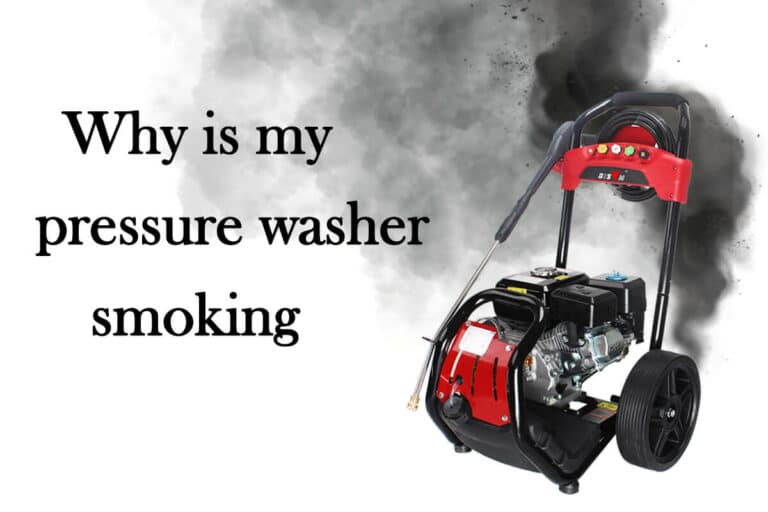
Why is my pressure washer smoking
This blog will help you understand the common reasons why your pressure washer may smoke. In the end, you’ll learn what the smoke could mean

